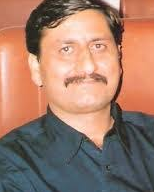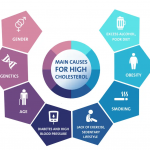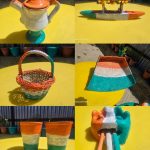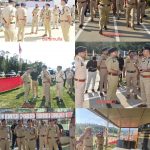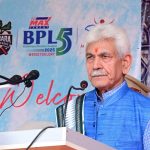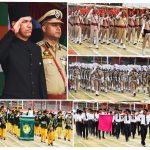FRAGRANCE OF IDEAS
A write-up titled, “Who made RSS a stark reality in Kashmir & How” written by this author and published in a number of newspapers and magazines last month was left unconcluded. Time has come to take the narrative in this regard to the next stage. Though there can be no attempt that can be termed as a concluding one in this regard yet we will as on date make an honest attempt to take it to the near completion. A number of elements and forces unleashed a fake narrative about the organisation over a period of time contrary to the ground realities in Kashmir valley. Here we go about the stark realities.
Earlier we covered the period from 1925 to around 1970 in piecemeal. Now it would be advisable to move forward towards the 1970s and 1980s. But the story will begin from 1967 to be precisely accurate. However, it needs to be said here that after three important developments pertaining to the tragic death of Shyama Prasad Mukherjee in Kashmir, arrest of Sheikh Abdullah in the Kashmir Conspiracy case and the unceremonious end of Praja Parishad movement, the reigns of the state of J&K went into the hands of Bakshi Ghulam Mohammed as the “Wazir-e-Azam”. All these developments happened in the year 1953.
Then on the insistence of Bakshi, the Prime Minister of the country, Pandit Nehru, agreed to the proposal to bring an amendment in the constitution in the name of Article 35A thereby giving sharp teeth to the Article 370 to bite the Indian interests in Jammu and Kashmir. It was brought clandestinely and surreptitiously by the central government without taking parliament into confidence taking refuge under the provisions of Article 370. All these developments weakened the position of the nationalist forces drastically in the state, the RSS also became its one of the worst victims. ‘Witch-hunting’ became the order of the day and the axe fell on the RSS activists heavily.
In a new socio-political scenario, the RSS activities remained subdued and particularly so in the Kashmir valley; the organisation started to work under different names. In 1967, a minor Hindu girl named Parameshwari was abducted and married by a Muslim Youth and consequently also converted. This flared up a big agitation by the Hindus of the Kashmir valley. This agitation continued for two long months and was openly supported by the RSS and the other Kashmiri Pandit activists and organisations. Prominent among those who took an active leading role in the agitation and the allied actions included Amarnath Vaishnavi, Shambhunath Kachroo, Amarnath Ganjoo, Tikalal Tapiloo, Dinanath Zutshi, Madanlal Khashu and others.
After the overwhelming Hindu agitation, in which seven Kashmiri Pandits got martyred due to the police action and the mob violence and thousands got injured, the RSS started doing its activities more openly but cautiously in the valley of Kashmir. The historic Sheetalnath in Srinagar became its centre and it opened its offices in the area of Hindu dominated Badiyar and Ganpatyar in Habbakadal-Srinagar. Against all odds, the functionaries of RSS began expanding its area of operation and influence in the places where Hindu population was somewhat visible in otherwise a heavily Muslim dominated demography of the valley.
With the passage of time, Jana Sangh, ABVP and BMS also started doing their activities in the valley at a lukewarm level. It is important here to name some of the prominent faces of that period. They included: Pushkarnath Karnail, D.P.Kaul, Adv. Premnath Bhat, Motilal Zadoo Pushkar, Adv. Harji Lal Jad, Motilal Kuchroo, Jialal Kaul, Somnath Suri, T.N.Mattoo, Chunilal Kaul, Lala Dina Nath, T.N.Dhar, Shiban Krishen Ganjoo, Hiralal Chatta, Ashok Kumar Braroo, Inder Krishen Zutshi, Bal Krishen Seru, Ashok Kaul, Rajinder Kampassi, Roshan Lal Bali, Anupam Kaul, Subhash Jain, Upinder Sarup, Bharat Bhushan Bhat, Bal Krishen Bhat, Upinder Bhat, Utpal Kaul, Ramesh Handoo, Pramod Durrani, Dr. J.N.Jigyasu, Subhash Kaul, Ashok Fotedar, Adv. Jai Kumar Bhat, Niranjan Nath Kaul, Omkarnath Raina, Shiban Krishen Thathoo, Mohan Lal, Krishen Gopal Aggarwal, Raj Kumar Chawla, Kuldeep Sumbly (Agnishekhar), Chand Ji Bhat, Shiban Krishen Pandita, Susheel Wattal, Pradeep Raina; and this author. Ashok Kaul (presently the BJP General Secretary-Org J&K) also came into contact with the organisation in the 1970s.
The declaration of Emergency brought a very tumultuous period for the RSS in Kashmir that has already been discussed in detail in the previous articles. During the period of emergency from 1975 to 1977, a malicious campaign was launched against the RSS at the national level. Words derogatory in meaning and essence like fascist, reactionary, violent, communal and anti-national & anti-social were used to ‘demarcate’ the organization and its activists. Ban on the organisation brought further miseries to the people connected with the organisation during the emergency. Sheikh Abdullah, who was in the chair as the Chief Minister of Jammu and Kashmir from 1975 onwards took stringent measures to curb the organisation’s activities throughout the state and put many activists behind the bars.
Things changed after the Emergency when the ban was lifted from the organisation. However, a number of RSS activists were dismissed from the government and other services in the valley. They suffered enormously due to the actions taken against them by the government. However, that didn’t dampen the confidence of the organisation nor its activists. The RSS conducted its activities more frequently throughout the J&K state and also in the Kashmir valley. All top functionaries of the organisation except the Chief of the organisation paid visits to the Kashmir valley off and on. VHP also started its activities in the valley and focused primarily on the cultural and religious issues. Programmes related to the Ramjanama bhoomi movement were planned and organised in the valley during the 1980s with great passion and enthusiasm.
RSS established a separate organisation for organising the Hindu youth of the valley named Hindu Yuvak Forum (HYF). This author was assigned the responsibility of running the organisation in the year 1982. I took over the responsibility first as the General Secretary and later as the President of the HYF. It turned out to be the most vibrant organisation of Hindu youth activism in the valley from 1982 to 1989. Among the other prominent activities, the HYF organised a very successful two-day Convention in July-1985 in Srinagar. Justice Shivnath Katju (Retd.), the International President of VHP, presided over the function and Sushil Modi, the All India General Secretary of ABVP was the Chief Guest in the programme.
Prof. D.N.Madan, a reputed educationist and the Principal of Gandhi Memorial College was the Chairman of the Reception Committee of the prestigious Convention. This author was the Chairman of the Organizing Committee of the whole programme. It was attended by more than 200 delegates from across the valley and 1,000 people participated in the concluding function of the extravaganza. The event was covered by Hindustan Times, Indian Express, Organiser, Panchajanya and Martand. The other main organizers of the whole event comprised Utpal Kaul, Ajay Kumar Chrungoo, Pradeep Mattoo, Vinod Khar and Ashwani Pandita.
The Convention brought a number of resolutions in which it was emphatically said that the Hindu youth were compelled to leave the valley due to the pressing educational and economic situation and bias against them in the valley. The resolutions also hinted towards the conspiracy of “Islamisation of Kashmir”. It was also said that a silent mass exodus of the Hindu population of the valley was on cards. The governments were warned that communal and fundamentalist movements against the Kashmiri Pandits were on rise in the valley. Just after seven months of the event, a large scale loot, burning & desecration of temples and intimidation of the minority Hindu population in the valley shook the Hindu community in Kashmir.
This dangerous situation was addressed by the leadership of the Hindu minority community, which by and large comprised the RSS, very effectively. Parliamentary delegations were deputed to Kashmir which took stock of the situation and reported to the Central government. Accordingly, in a week’s time, the state government under the leadership of Gul Shah was dismissed and the Governor’s rule was declared in the Jammu and Kashmir state. RSS-BJP played the key role in this development. But the storm was yet to come when immediately after the state elections in 1987, NC-Congress alliance took over the leadership of the government in the state. Farooq Abdullah assumed the Chief Ministership of the state with a comfortable majority.
Terrorism gripped the Kashmir valley and things deteriorated drastically. Bomb blasts, arms training, smuggling of ammunition and arms into the valley and the terrorists crossing the LoC became a normal feature. Both the governments, state as well as the centre, were well aware of all these developments and all sorts of reports reached the corridors of power. People in administration got entangled in the terror network and espionage activities. Kidnappings and killings started happening on a regular basis.
The first victim of Islamic terrorism was Tikalal Tapiloo, an RSS veteran and the senior Vice President of the State BJP. He was martyred on 13 September 1989 followed by the killing of Judge Neelkanth Ganjoo on the Court Road in Srinagar in November, 1989. On 27 December 1989, a big voice of the community and of the RSS in the district of Anantnag was silenced forever. Adv. Premnath Bhat was killed in broad daylight on the main road in the town of Anantnag. His killing let loose the patience of everyone and especially the minority hapless community of Hindus in Kashmir.
The minority community on the basis of their experience concluded that they have been failed by the government of India, the state government and also the Muslim majority community in Kashmir. The night of 19 January 1990 worked as the last nail in the coffin when lakhs of people assembled in villages, towns and cities to warn the Hindus of dire consequences if they stayed further in the valley. Lot has already been said about this by now.
The unfortunate mass-exodus of the Hindu community from the valley also saw the mass-exodus of RSS from the valley. It was a stark national failure, unparalleled and shameful, unheard and outthought in independent India. But RSS came to the rescue of the forlorn displaced community in Udhampur, Nagrota, Jammu, Kathua and Delhi. With the passage of time, the Kashmir RSS regrouped itself in the painful scenario of displacement from Kashmir. That story, the next time…!
(The author is a senior BJP & KP leader, Human Rights Defender, author & columnist and can be reached at [email protected])



